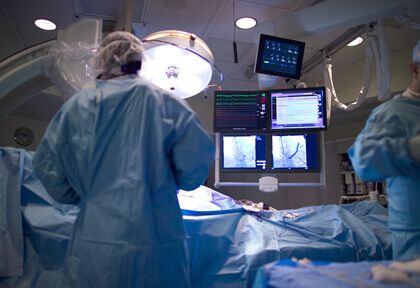Up to 20% of patients undergoing left main PCI require a 2-stent technique, and this number should most likely grow after the DKCRUSH-V outcomes. However, this study contradicts the DKCRUSH-V and brings us back to “the simpler the better”, since patients undergoing 1 stent left main PCI presented less revascularization and less target vessel failure than patients undergoing 2 stent PCI. Even more, it suggests extending DAPT when using a 2-stent technique.
 The aim of this study was to assess the impact of DAPT duration according to the chosen technique to treat left main bifurcations.
The aim of this study was to assess the impact of DAPT duration according to the chosen technique to treat left main bifurcations.
Researchers analyzed 5 multicenter registries looking into a combination of target vessel failure and thrombotic events, in addition to differences in the individual components. They carried out a subgroup analyzis according to DAPT duration.
Read also: DKCRUSH-V: What Is Simple Is Not Always Best for the Left Main Coronary Artery.
Of the 13172 registry patients undergoing PCI with new generation stents, 700 received left main bifurcation PCI (567 with 1 stent and 133 with 2 stents).
Target vessel failure and revascularization rates were higher in the 2-stent group (most lesions were more anatomically complex).
Thrombotic event risk was comparable between both strategies, though the subgroup analyzis showed the 2-stent group had a significantly higher risk when receiving DAPT for 1 year, while the risk was similar when DAPT went on for longer.
Read also: EXCEL-QOL Substudy: Similar Quality of Life both with CABG and Left Main PCI.
This study shows that complex PCI might help redefine DAPT duration.
Original title: Dual Antiplatelet Therapy Duration Determines Outcome After 2- But Not 1-Stent Strategy in Left Main Bifurcation Percutaneous Coronary Intervention.
Reference: Tae-Min Rhee et al. J Am Coll Cardiol Intv 2018;11:2453–63.
Get the latest scientific articles on interventional cardiologySubscribe to our weekly newsletter
We are interested in your opinion. Please, leave your comments, thoughts, questions, etc., below. They will be most welcome.





